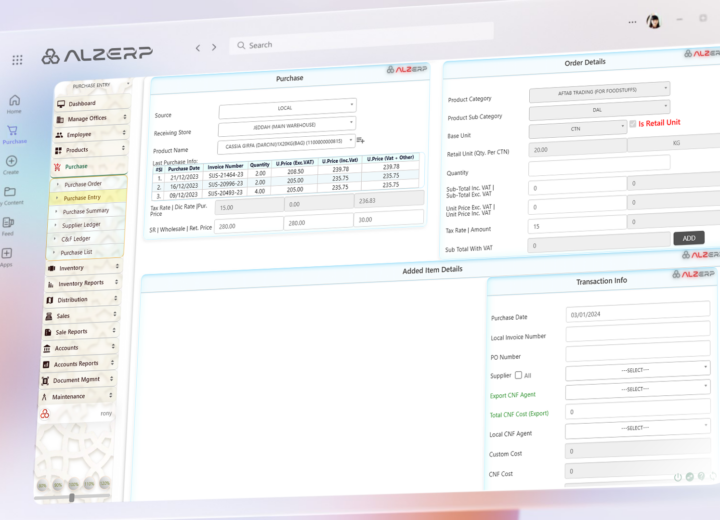Summary of E-Invoicing in Saudi Arabia – Solutions by Alwajeez Tech
E-invoicing in Saudi Arabia is mandated by ZATCA (Zakat, Tax, and Customs Authority) and involves a two-phase implementation process. The system ensures that businesses generate, store, and report tax invoices using compliant e-invoicing solutions. Phase One introduced e-invoice generation, while Phase Two enforces integration with ZATCA’s Fatoora Portal for real-time invoice reporting and clearance. Here is an overview of what are the key phases, requirements, and processes for e-invoicing in Saudi Arabia, solutions by Alwajeez Tech?
Key Benefits
- Regulatory Compliance: Ensures businesses adhere to ZATCA’s e-invoicing standards.
- Seamless Integration: E-invoicing solutions can connect directly with ZATCA’s Fatoora Portal.
- Enhanced Tax Transparency: Reduces tax fraud and improves VAT compliance.
- Automation & Efficiency: Eliminates manual invoicing errors and enhances operational efficiency.
- Real-Time Invoice Validation: ZATCA clears tax invoices before they are shared with buyers.
- QR Code Authentication: Buyers can verify invoices by scanning QR codes via the VAT app.
- Secure Storage: Ensures compliant digital storage of invoices in XML or PDF/A-3 format.
- Faster Processing & Reporting: Businesses can report simplified tax invoices within 24 hours.
- Business Scalability: Supports both small businesses and enterprises with automated invoicing.
- Fraud Prevention & Accuracy: Ensures accurate invoice data, reducing tax evasion risks.
الميزات الرئيسية
1. E-Invoicing Phases
Phase One (Generation Phase) – Implemented December 4, 2021
- Businesses must generate compliant e-invoices using approved e-invoicing solutions.
- Invoices must be stored digitally and include all mandatory fields.
- QR codes must be included for VAT app verification.
Phase Two (Integration Phase) – Started January 1, 2023
- يجب على الشركات integrate with ZATCA’s Fatoora Portal إلى transmit, validate, and clear tax invoices.
- Integration occurs in waves, with at least 6 months’ advance notice من ZATCA.
- Mandatory real-time clearance for tax invoices before sending them to buyers.
2. E-Invoicing Requirements
General Requirements:
- Use a ZATCA-compliant e-invoicing solution.
- Generate e-invoices in XML أو PDF/A-3 (with embedded XML) format.
- تأكد من internet connectivity for integration with ZATCA’s platform.
Phase One Requirements:
- Fulfill all additional mandatory fields required for compliance.
Phase Two Requirements:
- Include additional mandatory fields and security features.
- Integrate with ZATCA’s “Fatoora” Portal for real-time invoice clearance.
E-Invoicing Processes
Phase One Process:
- Invoice Generation: Seller creates a compliant e-invoice.
- Invoice Sharing: Seller sends the invoice to the buyer.
- Invoice Storage: Seller stores the invoice in the e-invoicing solution.
- QR Code Verification: Buyer can scan the QR code using the VAT app.
Phase Two Process – Simplified Tax Invoice:
- Invoice Generation: Seller generates an e-invoice with mandated fields.
- Invoice Sharing: Seller sends the invoice to the buyer.
- Invoice Storage: Seller stores the invoice in their system.
- Reporting to ZATCA: Seller reports the invoice to ZATCA within 24 hours.
- QR Code Verification: Buyer verifies invoice details by scanning the QR code.
Phase Two Process – Tax Invoice (Cleared by ZATCA):
- Invoice Generation: Seller generates an e-invoice with all mandated fields.
- Submission to ZATCA: Seller submits the invoice to ZATCA’s Fatoora Portal لـ clearance.
- ZATCA Clearance: زاتكا validates و approves the invoice.
- Invoice Sharing: Seller sends the cleared invoice to the buyer.
- Invoice Storage: Seller stores the invoice in their e-invoicing solution.
- QR Code Verification: Buyer scans the QR code to authenticate the invoice.
This breakdown ensures businesses understand the phases, requirements, and processes of e-invoicing in Saudi Arabia, helping them adopt ZATCA-compliant solutions efficiently. 🚀



